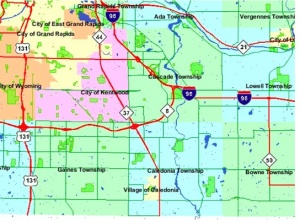Marcie Wheeler raises some interesting questions about the status of anti-choice in the Democratic constellation here in Kent County. The short version: is pro-life the dominant, requisite force that it once was, one that requires women to take it and say nothing?
There is a right way and a wrong way, IMO, to run an anti-choice candidate. Telling voters–particularly the women voters being impacted by anti-choice Dems of late–they can’t talk about it bc they don’t know enough is not the way to do it.
Particularly in the context of a run for the Third by Steve Pestka, the question of the pro-life Dems again rises up. The pro-life stance (or “anti-choice”) has been seen as a prerequisite for competitive candidates since the Clinton election, in part because recruiting drew from the Catholic west side community and the Christian Reformed — both distinctly pro-life. Their victories and general growth in the number of elected officials seemed to confirm the stance. Wheeler’s challenge (and others) invites a reconsideration of this political axiom. The question of abortion may not be the deal breaker that it was 10 or 15 years ago.
One sign of change has been the growing political leadership in the City, on the school board (Tony Baker, Wendy Falb), and especially in the Second Ward with Ruth Kelley and Rosalynn Bliss.
A second sigh of change has been the diminishing of the cultural drivers for anti-choice over the past 10 years. It’s traditional electoral base has been in the Catholic and Dutch Reformed communities, the latter especially weakening demographically and broadening over this time. The interesting aspect about the redistricting of the Third has been the removal of some of these traditional bastions for the anti-choice side in the cities of Wyoming and Kentwood.
A third change is generational. The Life/Choice battle is a Boomer/Gen X issues. Anecdotally and by surveys, young evangelicals are not as wrapped up in the cultural war aspects — other issues, e.g. sex slavery or development, carry greater weight. This broadening of concern allows Dems to frame other compelling moral arguments away from the Life/Choice arena. While most young evangelicals will continue to vote R, the wider, more holistic range offers opportunity to pick up votes, perhaps moving from 25 percent D to 30 percent.
And finally, there are the efforts of the Republican Party itself. Turning Life into a voting issue certainly assisted them in the 90s; it clearly motivates their base. However, the very scope of their victory has capped their votes; once you have the significant plurality of pro-life votes, how many more are there? The pool of voters for whom Life is a voting issue has shrunk, most are Republican already. Moreover the radicalization of the GOP on this and general women’s health issues also functions to confirm present voters but push away moderates. Internal victory and radicalization has reduced the penalty for being Choice, in fact may render it moot.
Something like this can be seen in Justin Amash, himself. While in a nominal way pro-life, his own libertarian tendencies push him away from a (self) definition as pro-life. (Consider that in two years he has issued four news releases related to abortion).
If the Life/Choice battle is no longer the deal breaker it once was, what should Dems do? Read the rest of this entry »
Filed under: Democratic Party, Politics, 3rd Congressional, abortion, anti-choice, Catholic, Christian Reformed Church, Justin Amash, Kentwood, Marcie Wheeler, Pro-life, Rosalynn Bliss, Ruth Kelley, Second Ward, Tony Baker, Wendy Falb, Wyoming


